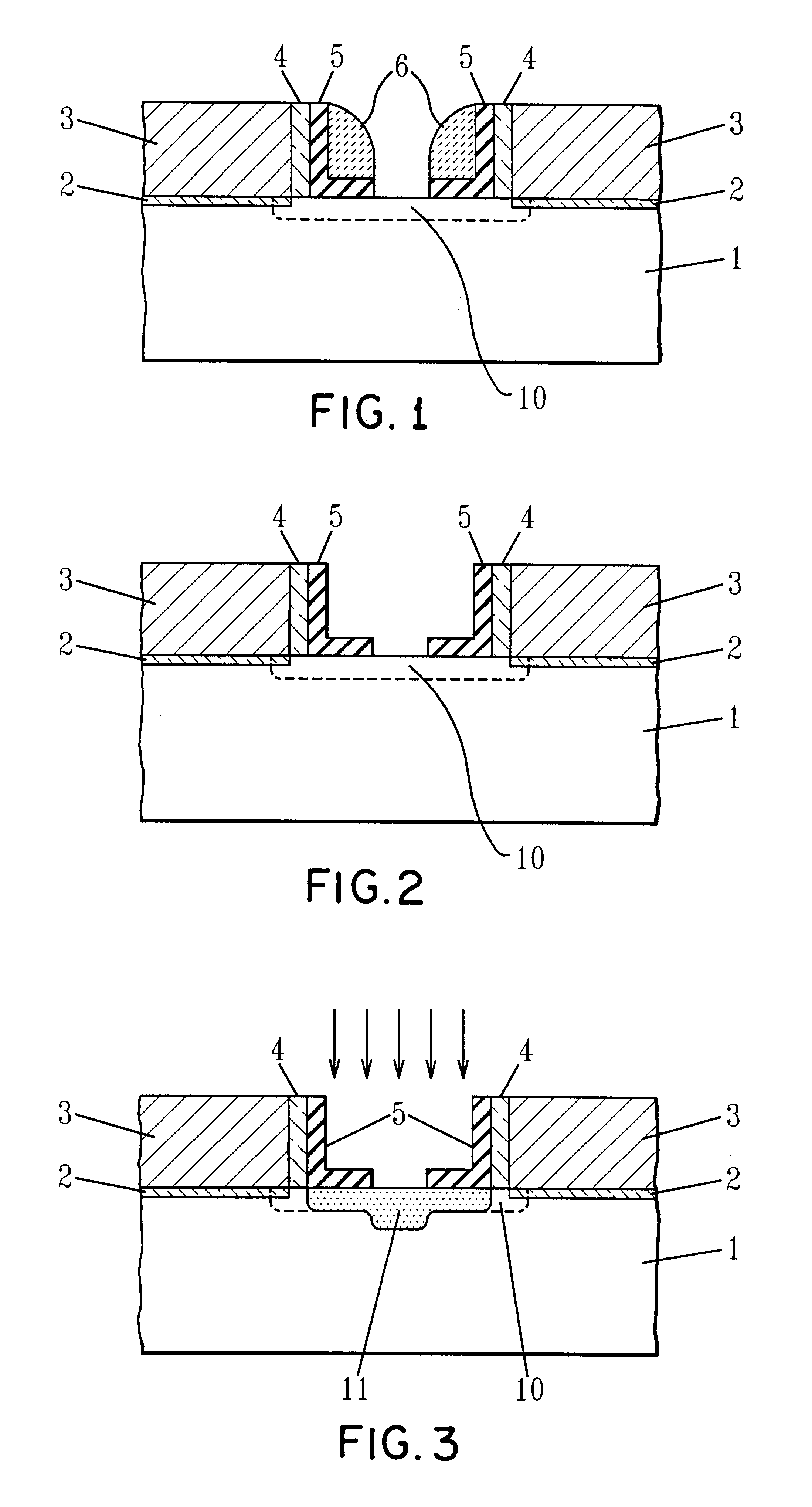Semiconductor structure having reduced silicide resistance between closely spaced gates and method of fabrication
- Summary
- Abstract
- Description
- Claims
- Application Information
AI Technical Summary
Benefits of technology
Problems solved by technology
Method used
Image
Examples
Embodiment Construction
In order to facilitate an understanding of the present invention, reference will be made to the various figures. The present invention provides a method for increasing the space available for silicide formation between adjacent gate structures thereby lowering the diffusion resistance. The method of the present invention permits effectively increased spacing for silicide formation without degrading the device short channel behavior.
In particular, according to the present invention, a semiconductor substrate 1 and gate conductor 3 located above gate insulator 2 is provided. The semiconductor substrate is typically silicon and the gate insulator 2 is typically silicon dioxide. A typical gate conductor 3 is a doped polycrystalline silicon, often referred to simply as polysilicon.
The thin gate insulator 2 is typically grown on or deposited onto the substrate 1. The gate insulator is typically about 30 to about 100 .ANG. thick and can be formed by thermal oxidation of the silicon substra...
PUM
 Login to View More
Login to View More Abstract
Description
Claims
Application Information
 Login to View More
Login to View More - R&D
- Intellectual Property
- Life Sciences
- Materials
- Tech Scout
- Unparalleled Data Quality
- Higher Quality Content
- 60% Fewer Hallucinations
Browse by: Latest US Patents, China's latest patents, Technical Efficacy Thesaurus, Application Domain, Technology Topic, Popular Technical Reports.
© 2025 PatSnap. All rights reserved.Legal|Privacy policy|Modern Slavery Act Transparency Statement|Sitemap|About US| Contact US: help@patsnap.com



